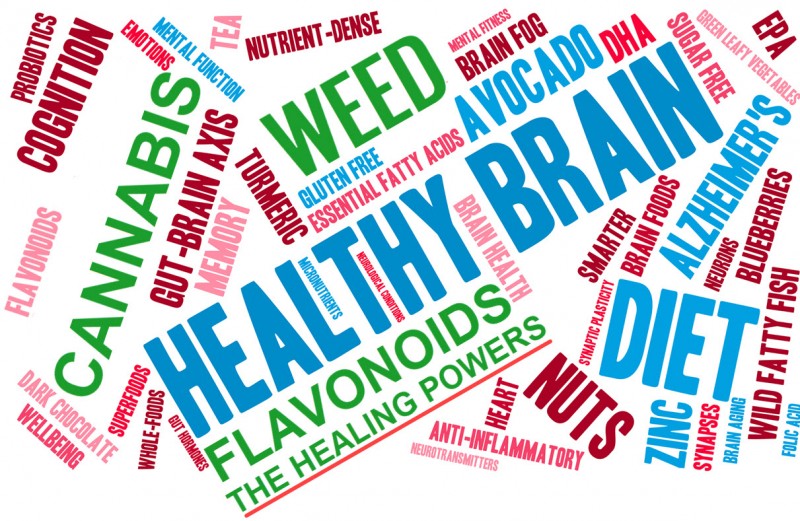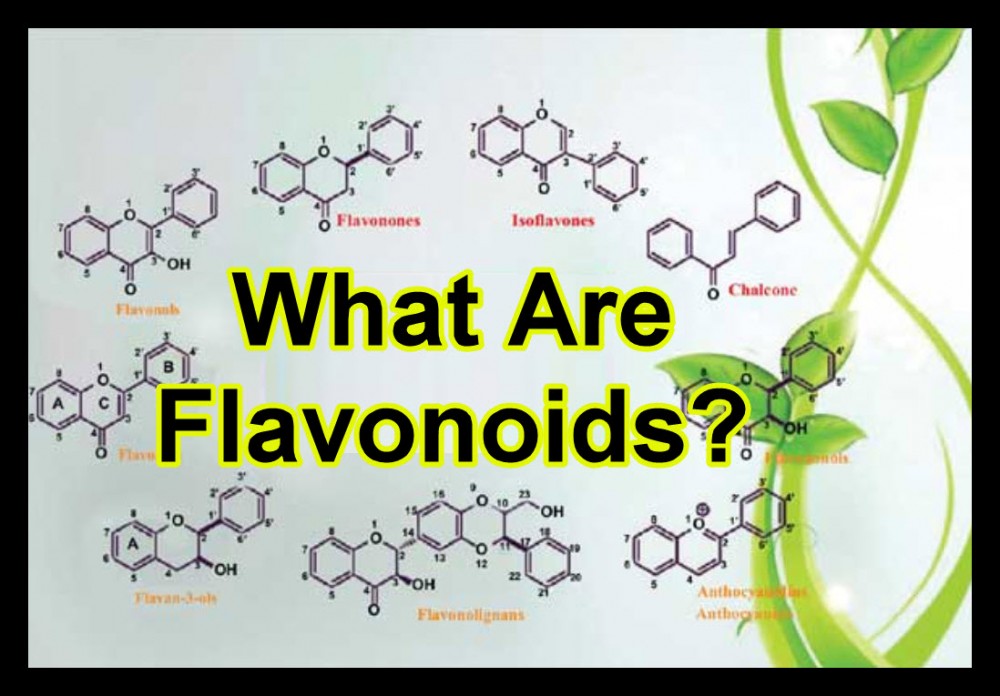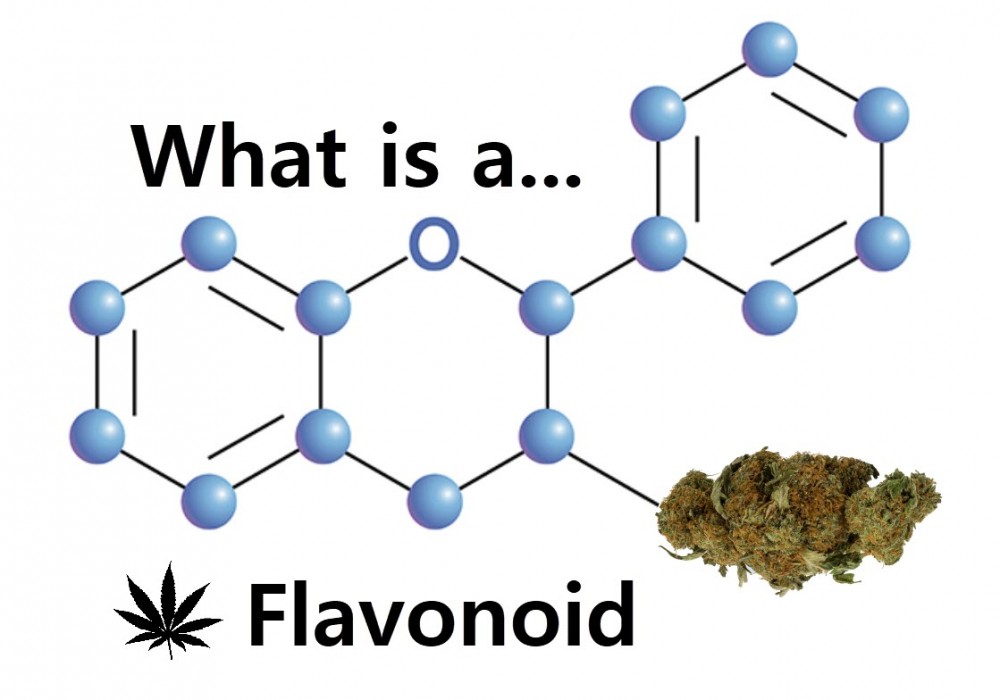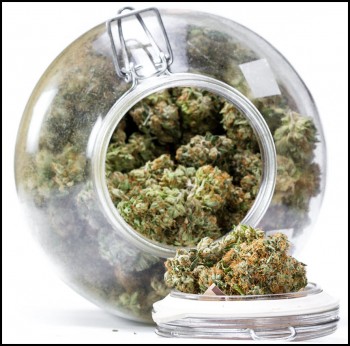The healing properties of flavonoids
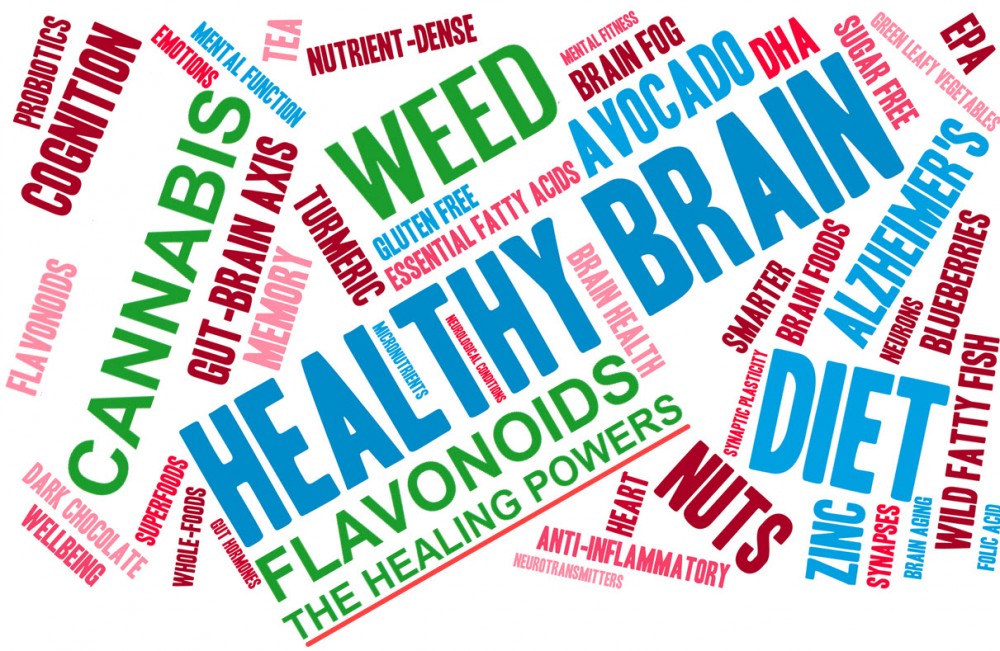
In recent years, the concept of the ‘entourage effect’ has taken the cannabis industry by storm. It’s the idea that all of the compounds contained in the cannabis plant work together and enhance each other in providing the plant’s therapeutic benefits. As a result of this finding, experts now advocate whole plant extractions (such as full-spectrum CBD) rather than single compound products (such as CBD isolate) in order to be able to fully benefit from the plant’s healing properties.
The entourage (or ensemble as some prefer to call it) effect is a result of a combination of the many cannabinoids, flavonoids, and terpenes contained in the plant. In this article, we’ll talk about the lesser known flavonoids, and how new research has dived into its many health benefits and its tremendous potential as a painkiller.
Flavonoids are the most abundant phytonutrients found in plants. They’re responsible for the non-green colors in plants, like the blue in blueberries, the red veins in kale, the yellow in sunflowers, and the blue and purple tones in the cannabis flower.
They’re found throughout all parts of the plant, from the seeds and stems, to the roots, leaves, and flowers. They’re integral to plants’ development, regulating cell cycle progression at a cellular level and acting as a defense mechanism. They also help prevent the damage caused by environmental stressors on plants and provide UV protection from the sun.
Out of the 8,000 varieties of flavonoids found in nature, at least 20 have been identified in cannabis. They’ve been found to contain neuroprotective, anti-inflammatory, antibacterial, antioxidant, and anti-fungal properties. In fact, they’ve been found to be so beneficial that they may even beat out aspirin in terms of pain-relieving potency.
What are the flavonoids in cannabis?
• Cannflavin A and Cannflavin B - Studies show these two flavonoids contain incredibly strong anti-inflammatory properties, more potent than aspirin by up to 30 times.
• Catechins - Have been found to have anti-hypertensive and antioxidant properties and are also found in cocoa and tea.
• Quercetin - Has demonstrated exceptional efficacy against influenza and is a strong antioxidant and antiviral cannflavin.
• Silymarin - Has been used since Ancient Greece, it’s highly effective in treating liver problems.
• Vitexin - Has been shown to be effective in fighting cancer.
• Luteolin - Linked to treating cancerous tumors and is found in clover.
Groundbreaking research from UK and Canada
In 1985, Marilyn Barrett, a researcher from the University of London, discovered that the flavonoids cannflavin A and B not only held considerable promise as an anti-inflammatory but were also found to be 30 times more powerful than aspirin. However, due to cannabis’ illegality, research into Barrett’s findings had been stalled. That is until Canada made the decision to fully legalize recreational cannabis last year.
With its new status, scientists and researchers were free to really look into flavonoids’ role as a potent analgesic. And that’s exactly what a team of researchers from the University of Guelph in Ontario did.
The team believes it’s been able to find a way to use genome mining to extract the cannabis genes that create cannflavins and be able to engineer the crucial cannflavin A and B without having to actually grow the plant. Due to the small amount of cannflavins present in the plant, you’d have to consume extremely high levels (Cheech and Chong levels, according to the Toronto Star) to be able to benefit from them. However, the University of Guelph’s team believe they’ve cracked the code to these potent painkillers. Professor Tariq Akhtar, from the university’s Department of Molecular and Cellular Biology, said in a statement, “There’s clearly a need to develop alternatives for relief of acute and chronic pain that go beyond opioids. These molecules are non-psychoactive and they target the inflammation at the source, making them ideal painkillers.”
If this is true, cannflavin extractions may be able to provide a natural and less harmful alternative to common NSAIDs like aspirin and ibuprofen which, while are effective anti-inflammatory medication, also pose health risks for some people and can result in kidney disease and/or gastrointestinal problems like nausea, indigestion, and, in severe cases, stomach bleeding.
So, what’s next?
The genome mining process has been patented and licensed by medical cannabis company Anahit International, which is looking into developing products that integrate this breakthrough finding. As it’s still early in the development stages, it’s too soon to say for certain what we can expect, but one thing’s for sure, great things are sure to come out of this. Ahktar and co. certainly are hopeful. He told the Toronto Star:
“We wouldn’t have been able to do this if it wasn’t for the climate right now in this country really pushing people like us to do this research. There’s a lot more research that has to happen and I think working in Canada right now, at a time when our government has been really supportive of this agenda and there’s a lot of industrial and financial support available to actually research this plant, makes for really exciting times.”
LEARN MORE ABOUT FLAVONOIDS, READ THESE...
WHAT ARE FLAVONOIDS IN CANNABIS, CLICK HERE.
OR...
WHAT ARE FLAVONOIDS? CLICK HERE.
OR..
CANANBIS FLAVONOIDS AND CANCER, READ THIS.

